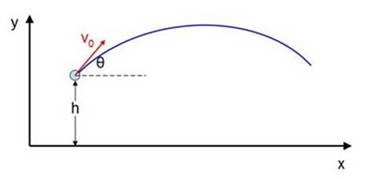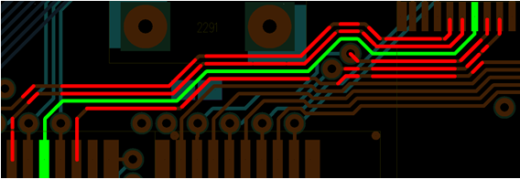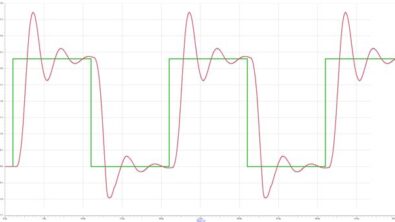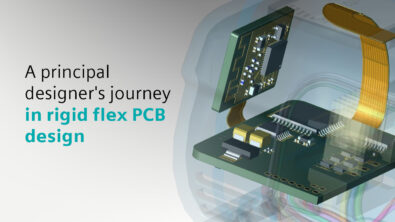Signal Integrity Design Fundamentals for Success: Episode 2
The Physics of Transmission Lines
If you’re anything like me, you may have taken a few physics courses, and upon successful completion of those courses, said to yourself, “That was fun, but as an electrical engineer, when would I ever be analyzing the projectile curve of a catapult launch?” While understanding and applying physics in electronics design might not be as exciting as catapult launching an object to land in an exact location, it is just as – if not more – important to consider when creating functional printed circuit boards (PCBs).

Modern day electronics almost always require design decisions to account for possible signal integrity (SI) complications. Here’s why: simple circuit analysis generally assumes “ideal” connections between components. That is, every part performs as if it had ideal electrical connections to other components. Imagine the difference between launching an object with your catapult into a perfect vacuum, versus in a field on a windy day. The properties of the real-world environment (in this case, wind and drag) will greatly influence the behavior of the object’s trajectory compared to launching in a perfect vacuum. This same idea must also be applied to the behavior of electronics.
At low frequencies and short distances, it can *mostly* be assumed that a PCB trace will act as if it were an ideal (i.e. a zero-ohm resistor) connection. In other words, the physical trace itself does not have inherent resistance, capacitance or inductance influencing its behavior. Unfortunately, this only applies to circuits that are operating at a low-enough frequency over a short enough distance. When the length of the signal trace becomes relatively long in comparison to the frequency of the signal, the signal trace must then be considered as a transmission line. When signal frequencies reach a high enough speed, as is the case with almost all electronic systems today, even a very short PCB trace is still a transmission line. Because of a transmission line’s high operating frequency, the AC (frequency response) electrical characteristics create an inherent resistance, capacitance and inductance on the trace, which are collectively known as the characteristic impedance ![]() .
.
Reflections
Say you fill a rectangular tub with water, and then push the water from one end of the tub towards the other end, creating a “wave”. As soon as that generated wave reaches the opposite edge of the tub, some, or all, of it will be “reflected” back towards you. Now, imagine if that rectangular tub was infinitely long. When you generate the wave (ignoring other external resistive factors), none of it can be reflected back, because the tub goes on forever. This is the same concept as impedance matching. When the load impedance on a line is the same as the line’s characteristic impedance, it is effectively like having an infinitely long transmission line. The load will absorb all of the energy, preventing any reflections. Now, imagine the real tub – when the wave reaches the end of the tub, some of it reflects back. This corresponds to an electrical circuit with an impedance mismatch at the end of the transmission line. The differing impedance values cause part of the signal wave to be reflected back to the source from the load. If the source impedance is also not matched to the line, then this reflected wave will continue to travel back and forth between the source and the load, getting partially absorbed each time, until all of its energy is depleted. When reflections are present on a line, they can significantly disrupt the original signal, leading to a host of data complications.
Crosstalk
To better explain crosstalk, I’ll start off with the question: what is a capacitor? Capacitors generally consist of two parallel metal plates separated by a non-conductive dielectric material. When voltage is applied over the metal plates, it will produce an electric field. Now, think about closely spaced parallel electrical traces on a PCB. The conductive traces, and the narrow space between them, will produce a small capacitance, especially at higher speeds and closer proximity. This “mutual capacitance” can be responsible for the transfer, i.e. coupling, of energy from one trace onto other nearby traces. Additionally, the inherent inductance present on a PCB trace at high speeds creates a magnetic field, which can induce a smaller, opposite magnetic field on closely placed parallel traces. This energy that is coupled between traces as a result of mutual capacitance and mutual inductance is known as crosstalk. Crosstalk can create numerous undesired effects on the victim traces, so minimizing its presence is necessary. Some of the techniques used for this include: leaving wide spaces between nets, reducing the length of parallel trace segments as much as possible, proper placement of ground planes to transmission lines, and using differential pairs when necessary.
Reflections and crosstalk are just a couple of the SI complications associated with the real-world physical properties on high speed signals. Taking all of these potential problems into account when designing a PCB is no small task, especially with the industry demand for highly complicated, densely packed circuitry. As you can imagine, these mistakes are easily made and, unfortunately, can be difficult to find retroactively with manual inspection. Two of the rules available with HyperLynx DRC used to address both reflections and crosstalk are the “Termination Check” and “Crosstalk Coupling” rules. By quickly running these and other DRC rules on your PCB designs during the layout process, complicated SI issues are easy to locate and fix on the front end. To find out more about HyperLynx DRC, check out my on-demand webinar: Automated Rule Checking for Faster Time to Market.
If you missed my first post in this signal integrity blog series, and want to learn about differential impedance traces, click here!
Download a free trial of PADS Professional today!
Comments
Leave a Reply
You must be logged in to post a comment.





Excellent article on the PHYSICS of transmission lines. It contains no (often typical) mathematical ‘fog’ on TLs. Well done!
I agree with the other Alex: a concise & succint article giving the concepts without the clutter.
An excellent article. I will be revisiting many times!!!